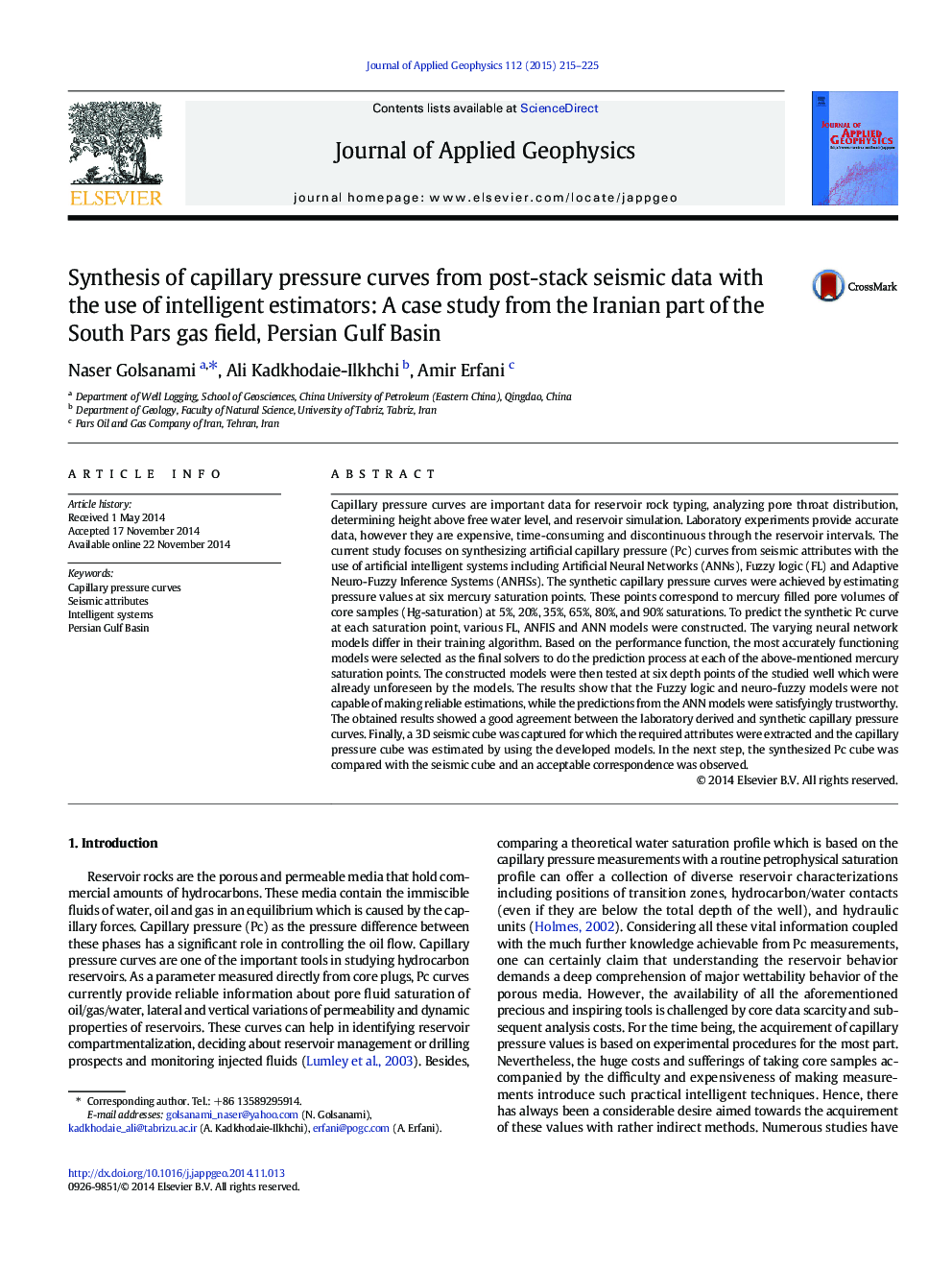| کد مقاله | کد نشریه | سال انتشار | مقاله انگلیسی | نسخه تمام متن |
|---|---|---|---|---|
| 4740011 | 1641139 | 2015 | 11 صفحه PDF | دانلود رایگان |
• We investigate feasibility of synthesizing artificial capillary pressure curves.
• We predict capillary pressure curves from seismic attributes by intelligent systems.
• Fuzzy logic and neuro-fuzzy systems couldn't prove to be appropriate in the current study.
• Neural networks could make predictions with a reasonable degree of accuracy.
Capillary pressure curves are important data for reservoir rock typing, analyzing pore throat distribution, determining height above free water level, and reservoir simulation. Laboratory experiments provide accurate data, however they are expensive, time-consuming and discontinuous through the reservoir intervals. The current study focuses on synthesizing artificial capillary pressure (Pc) curves from seismic attributes with the use of artificial intelligent systems including Artificial Neural Networks (ANNs), Fuzzy logic (FL) and Adaptive Neuro-Fuzzy Inference Systems (ANFISs). The synthetic capillary pressure curves were achieved by estimating pressure values at six mercury saturation points. These points correspond to mercury filled pore volumes of core samples (Hg-saturation) at 5%, 20%, 35%, 65%, 80%, and 90% saturations. To predict the synthetic Pc curve at each saturation point, various FL, ANFIS and ANN models were constructed. The varying neural network models differ in their training algorithm. Based on the performance function, the most accurately functioning models were selected as the final solvers to do the prediction process at each of the above-mentioned mercury saturation points. The constructed models were then tested at six depth points of the studied well which were already unforeseen by the models. The results show that the Fuzzy logic and neuro-fuzzy models were not capable of making reliable estimations, while the predictions from the ANN models were satisfyingly trustworthy. The obtained results showed a good agreement between the laboratory derived and synthetic capillary pressure curves. Finally, a 3D seismic cube was captured for which the required attributes were extracted and the capillary pressure cube was estimated by using the developed models. In the next step, the synthesized Pc cube was compared with the seismic cube and an acceptable correspondence was observed.
Journal: Journal of Applied Geophysics - Volume 112, January 2015, Pages 215–225
